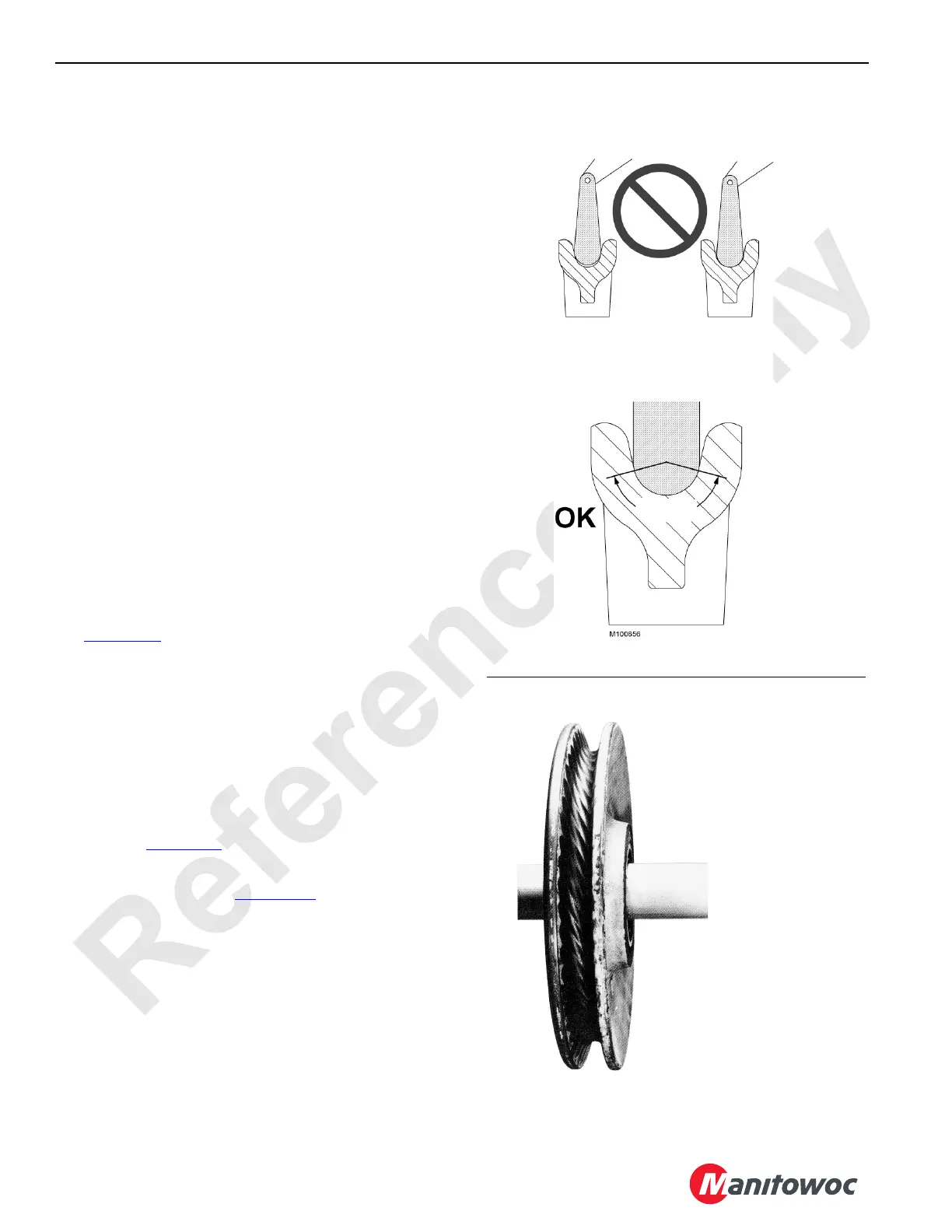HOISTS 16000 SERVICE/MAINTENANCE MANUAL
5-14
Published 05-03-17, Control # 228-03
SHEAVE, ROLLER, AND DRUM INSPECTION
Perform the following inspections weekly:
1. Check the drum clutches and brakes for proper
adjustment.
2. Check all sheaves, rollers, and drums for the following
conditions:
- Unusual noises
- Freedom of movement—must turn freely by hand.
The rope may have to be loosened to perform this
inspection.
- Wobble (the sheave, roller, or drum must turn true
with very little side-to-side or up-and-down play)
- Signs of rust, which indicate that water may have
entered the bearing
- Grease leaks, which indicate a faulty seal or water
in the grease
The above problems indicate bearing damage. If found,
the corresponding sheave, roller, or drum should be
disassembled for further inspection. New bearings
should be installed.
For sheaves not equipped with grease fittings, be sure to
pack new bearings with grease at assembly.
3. For steel sheaves, check the depth, width, and contour
of each sheave using a groove gauge as shown in
Figure 5-10
. Replace sheaves that have over or under
sized grooves.
4. Replace grooved drums that allow one wrap of wire rope
to contact the next wrap as rope spools onto the drum.
5. Inspect sheaves to verify they do not contact another
sheave or structural plate work. There should be uniform
clearance between sheaves in a cluster. Repair or
replace worn or damaged sheaves.
6. Remachine or replace steel sheaves, drums, or rollers
that have been corrugated by the wire rope’s print as
shown in Figure 5-11
.
7. Inspect nylon sheaves for excessive tread diameter
wear at location E in Figure 5-14
. Measure at three
places to check for uneven wear.
Wear must not exceed the limits given in the table.
Replace worn or damaged sheaves.
FIGURE 5-10
Observe groove to see if contour of gauge
matches contour at bottom of sheave groove.
Proper fitting sheave groove should support wire
rope or 135–150° of rope circumference.
Groove Too Small
Groove Too Large
135°–150°
FIGURE 5-11
“Corrugated” steel sheave,
roller, or drum will cause
wire rope to wear rapidly.
